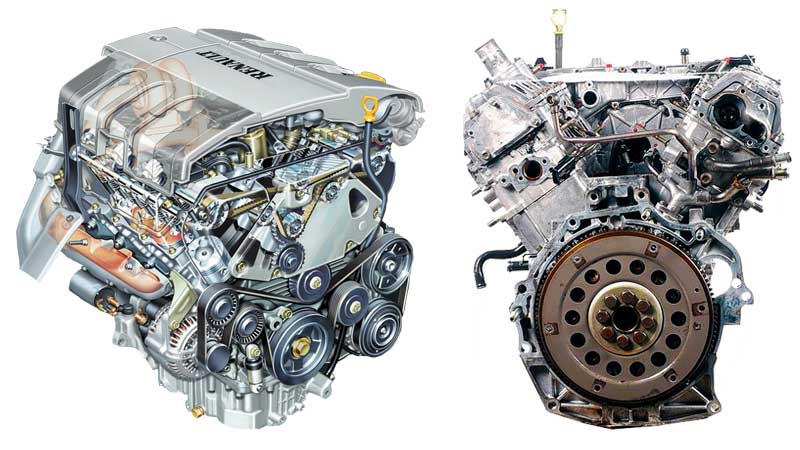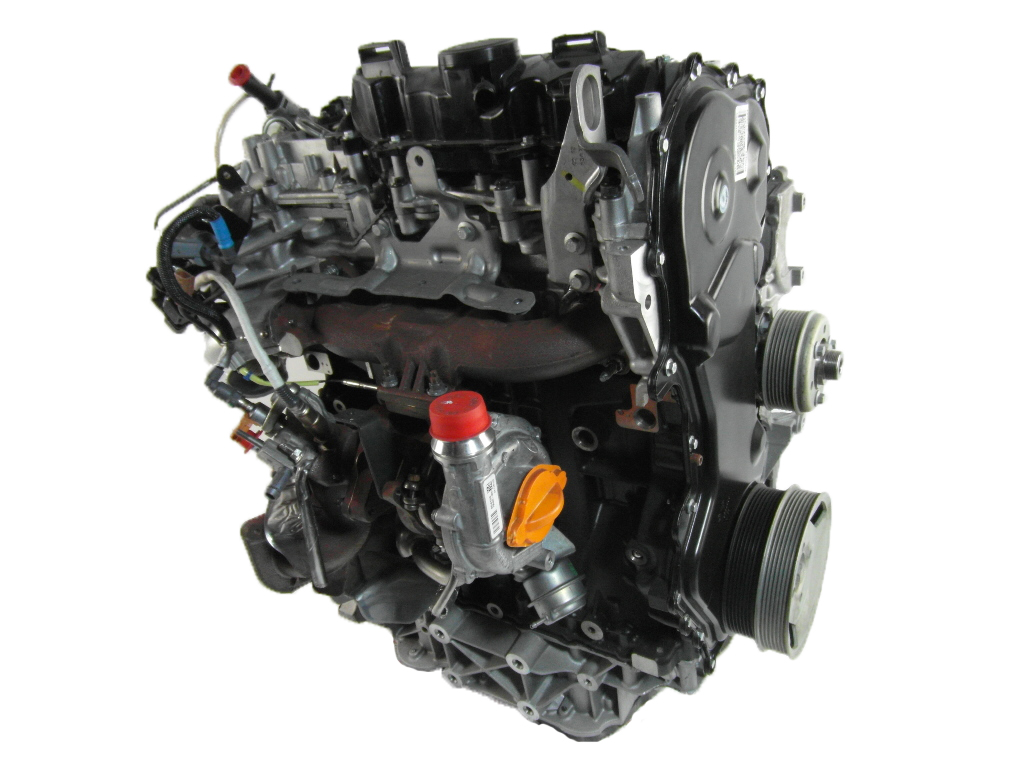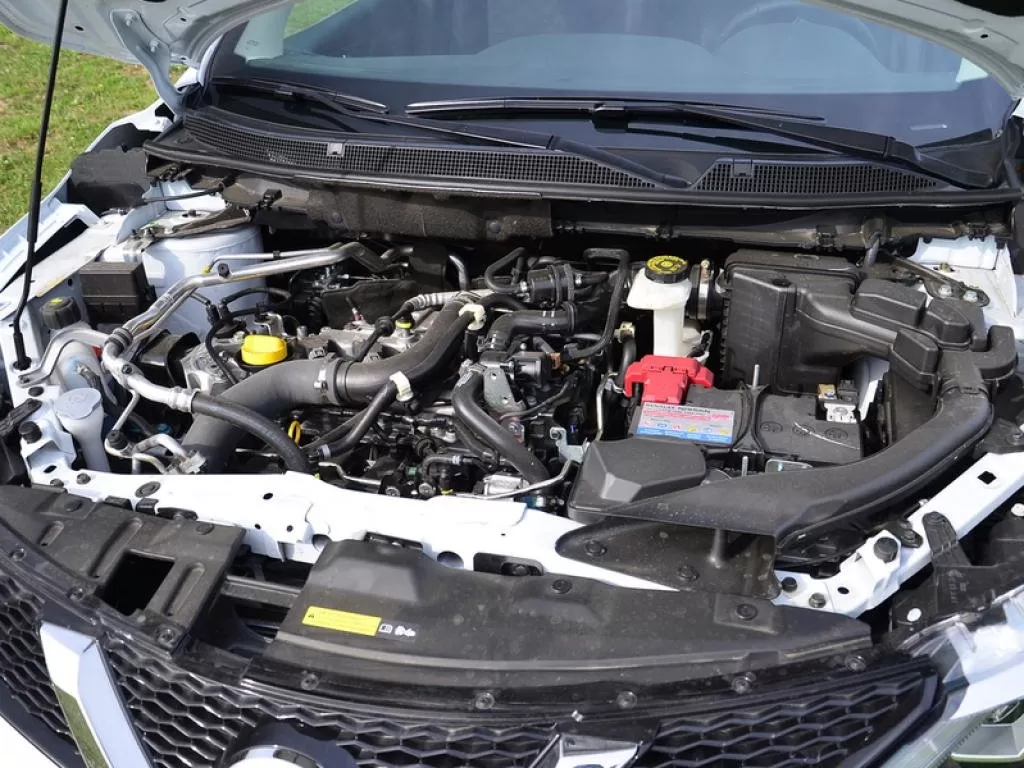Renault P9X 3.0-liter or 3.0 dci diesel engine was purchased from Isuzu from 2002 to 2010 and was installed in the largest models of the concern of its time, such as Espace and Vel Satis. This diesel engine is called Isuzu 6DE1 and is also known as Saab D308L, Opel Y30DT or Z30DT.
Description of the device of the P9X 3.0 dCi motor
In the late 90s of the last century, the American concern General Motors ordered Isuzu company to develop a powerful diesel engine for its prestigious European models Saab 9-5 and Opel Vectra. The new motor was presented in 2001 and soon it was put on Renault Espace and Vel Satis. It is an all-aluminum engine with a closed cooling jacket, cast iron liners, a pair of DOHC cylinder heads, Common Rail Denso fuel system, turbine with variable geometry and combined timing drive: the pump and fuel injector are driven by gears, and camshafts by belt.
Almost immediately there were complaints about frequent overheating of the engine, up to cracking of the block. Official dealers recognized the problem and even replaced the damaged engines under warranty. In 2005, there was an updated version of this diesel engine, which has no such shortcomings.
The technical characteristics of the engine Renault P9X 3.0 dCi
First generation P9X 701
| Parameter | Value |
|---|---|
| Type | V-shaped |
| Number of cylinders | 6 |
| Number of valves | 24 |
| Definite displacement | 2958 cm³ |
| Cylinder diameter | 87.5 mm |
| Piston stroke | 82 mm |
| Power system | Common Rail |
| Power | 177 hp |
| Torque | 350 Nm |
| Compression ratio | 18.5 |
| Fuel type | Diesel |
| Environmental standards | Euro 3 |
Second generation P9X 715
| Parameter | Value |
|---|---|
| Type | V-shaped |
| Number of cylinders | 6 |
| Number of valves | 24 |
| Definite displacement | 2958 cm³ |
| Cylinder diameter | 87.5 mm |
| Piston stroke | 82 mm |
| Power system | Common Rail |
| Power | 181 hp |
| Torque | 400 Nm |
| Compression ratio | 18.5 |
| Fuel type | Diesel |
| Environmental standards | Euro 4 |
Engine application
| Car | Years of manufacture |
|---|---|
| Renault Espace 4 (J81) | 2002 – 2010 |
| Vel Satis 1 (B73) | 2002 – 2009 |
Service regulations
| Operation | Periodicity |
|---|---|
| Oil service | Every 15,000 km |
| Oil volume | 8.5 liters |
| Needed for replacement | About 7.3 liters |
| Oil type | 5W-30, 5W-40 |
Gas distribution mechanism

| Parameter | Value |
|---|---|
| Transmission drive type | Belt |
| Declared life | 120,000 km |
| In practice | 150,000 km |
| Break/Slip | Valve bending |
Valve thermal clearances
| Parameter | Value |
|---|---|
| Regulation | Every 100,000 km |
| Principle of adjustment | Selection of tappets |
| Inlet clearances | 0.35 – 0.45 mm |
| Exhaust clearances | 0.35 – 0.45 mm |
Change of consumables
| Consumables | Periodicity |
|---|---|
| Air filter | 15 thousand km |
| Fuel filter | 30 thousand km |
| Tank filter | 90 thousand km |
| Spark plugs | 120 thousand km |
| Auxiliary belt | 90 thousand km |
| Antifreeze | 5 years or 90 thousand km |
P9X diesel reviews its pros and cons
Disadvantages:
- Provides the car with excellent dynamics
- Fairly moderate fuel consumption
- The updated version of the dvs is reliable
- There is a choice of donors in the aftermarket
Disadvantages:
- Frequent overheating of the dvs prior to the upgrade
- Regular electrical problems
- The EGR valve clogs very quickly
- Not every workshop will take them on
Disadvantages, breakdowns and problems of the P9X engine
Overheating
Diesel power units from 2001 to 2005 suffered from frequent overheating, up to cracks in the block, sagging liners, antifreeze bursting into the exhaust manifold, warped heads and even rupture of the expansion tank and cooling radiators.
Sensors
In this motor, camshaft sensors often fail, especially after belt replacement, and the DMRV also fails. Its breakdown is indicated by a sharp drop in the thrust of the motor.
Other problems
The rest of the breakdowns will be listed in one cluster: the EGR valve is quickly encrusted, the mechanism of changing the geometry of the turbine often jams and the exhaust manifold burns out.
The manufacturer has declared the engine resource of 250 000 km and most often it serves so long.



0 Comments